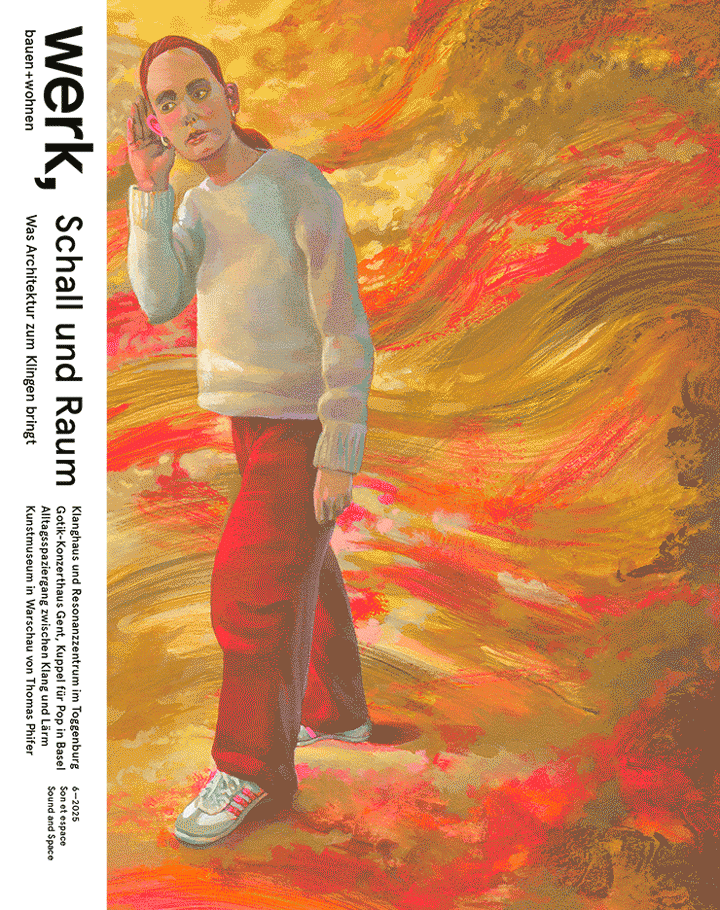werk, bauen + wohnen 6 – 2025

Hearing Spaces
The sound echoes twelve times through the hall, silencing everything else. When Christian Zehnder, the artistic director of the facility, begins to yodel energetically, it becomes clear what the Klanghaus Toggenburg was made for. Zehnder explains that central space has a special acoustic quality, a strong character. Inspired by models from Isfahan, perforated walls serve as resonating bodies, some of which can be opened and closed. They shape the sound like an instrument. The opening of this long-awaited building offers a welcome opportunity to reflect on the relationship between sound and space. We talked to Christian Zehnder and Astrid Staufer, the architect of the Klanghaus, about the building itself but also about Toggenburg traditions, sound spheres in the valley, and synesthetic spatial experiences (p. 6).
In a world dominated by visual images, we often fail to consciously register our acoustic environment. And when sounds are noticed, they are often quickly regarded as noise, whether caused by motorized traffic or children at play. We often move through spaces whose acoustic qualities hardly seem worth mentioning. Nevertheless, their influence is inescapable. But do we still have an open ear for this? In a personal essay (p. 16) Sabine von Fischer examines everyday spaces and sounds and poses the question as to which sounds are enriching, and which are just disturbing clamour.
The other projects in this issue focus on a good listening experience. Here the space forms the sound and vice versa. In Basel Vécsey Schmidt have designed the Neue Kuppel, a building for pop music. Essentially, its space and sound-shaping geometry employs principles like those used in the Baroque era (p. 30). In Gent, Belgium, DRDH architects had the floor in a Gothic concert hall lowered to create better spatial proportions — an expensive undertaking.
But the sound in the renovated hall is now far better than previously (p. 22). What all the projects presented in this issue have in common is that they combine geometry, materials, and carefully detailed surfaces to create an architecture that delights not only the eye but also the ear. — Christoph Ramisch, Roland Züger